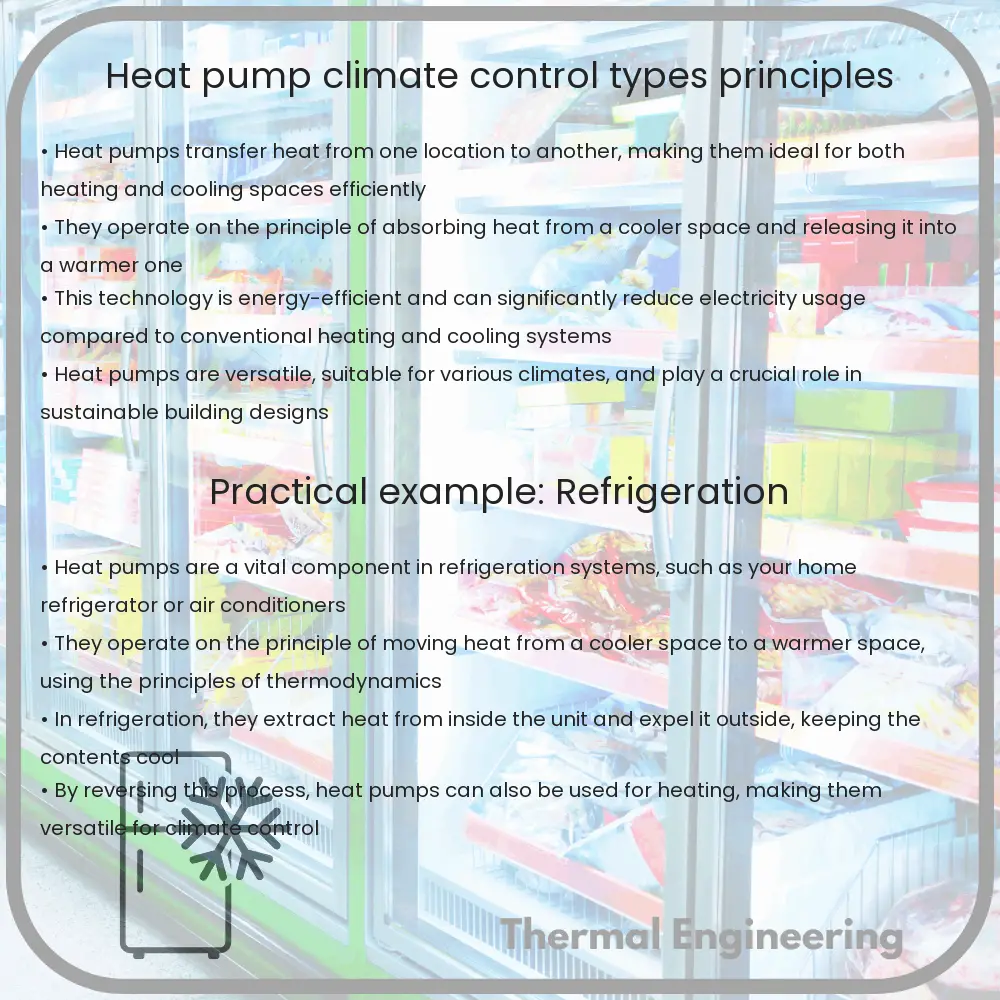Learn about heat pumps, their working principles, types, and benefits for efficient climate control and sustainability.

Understanding Heat Pumps: Principles and Types for Climate Control
Heat pumps are a versatile and efficient solution for both heating and cooling buildings. By exploiting the principles of thermodynamics, they transfer heat from one place to another, providing year-round climate control. This article explores how heat pumps work, their different types, and their significance in promoting sustainable energy practices.
The Principles Behind Heat Pumps
Heat pumps operate on the basic principles of heat transfer, which involve absorbing heat from a cooler space and releasing it to a warmer one. This is achieved through a cycle of evaporation and condensation using a refrigerant. The main components of a typical heat pump include a compressor, a condenser, an expansion valve, and an evaporator.
In the heating mode, the heat pump extracts heat from outdoor air, ground, or water sources, and transfers it indoors. In contrast, when cooling is needed, the system reverses, pulling heat from the indoor air and releasing it outdoors. This dual functionality makes heat pumps a highly efficient form of heating and cooling.
Types of Heat Pumps
- Air-source heat pumps: These are the most common types of heat pumps. They transfer heat between your house and the outside air. Air-source heat pumps are cheaper than other types and are easier to install.
- Ground-source (or geothermal) heat pumps: These systems use the earth’s constant ground temperature to improve efficiency and comfort. While more expensive and requiring significant installation work, they offer lower operating costs and are more efficient throughout the year.
- Water-source heat pumps: Similar to ground-source, these heat pumps use nearby water sources, like lakes or wells, to exchange heat. They are ideal in areas with a nearby water source.
- Hybrid heat pumps: These systems combine the features of gas furnaces and electric heat pumps to optimize energy use and reduce operational costs, especially in colder climates where a single system may not be efficient enough.
How Heat Pumps Promote Energy Efficiency
Heat pumps are considered to be one of the most energy-efficient forms of climate control. Rather than generating heat, they simply move existing heat from one place to another. This process can be three to four times more energy efficient compared to traditional heating systems like furnaces and boilers. The efficiency of a heat pump is often measured by the coefficient of performance (CoP), which is the ratio of heat output to the electrical energy input, expressed as:
CoP = Heat Output (in Joules) / Electrical Energy Input (in Joules)
The higher the CoP, the greater the efficiency of the heat pump. Modern heat pumps typically have CoP values ranging from 3 to 5, indicating that for every unit of electricity they use, they provide three to five units of heat.
Environmental Impact
By utilizing ambient air, ground, or water temperatures to heat and cool buildings, heat pumps can significantly reduce greenhouse gas emissions compared to systems that rely on combustion. As they depend largely on electricity, their environmental friendliness is enhanced when paired with renewable energy sources such as solar or wind power, contributing further to reductions in carbon footprints.
The Future of Heat Pumps
With advancements in technology and growing emphasis on sustainability, the adoption of heat pumps is expected to increase. Innovations aim to improve their efficiency in extremely cold climates and to integrate them with smart energy systems. This positions heat pumps as a crucial component in achieving future energy efficiency targets and reducing global dependence on fossil fuels.
Understanding how heat pumps work and their different types can help consumers and businesses make informed decisions about their heating and cooling needs. By choosing the right type of heat pump, users can enjoy comfortable indoor environments, lower energy bills, and a reduced environmental impact.